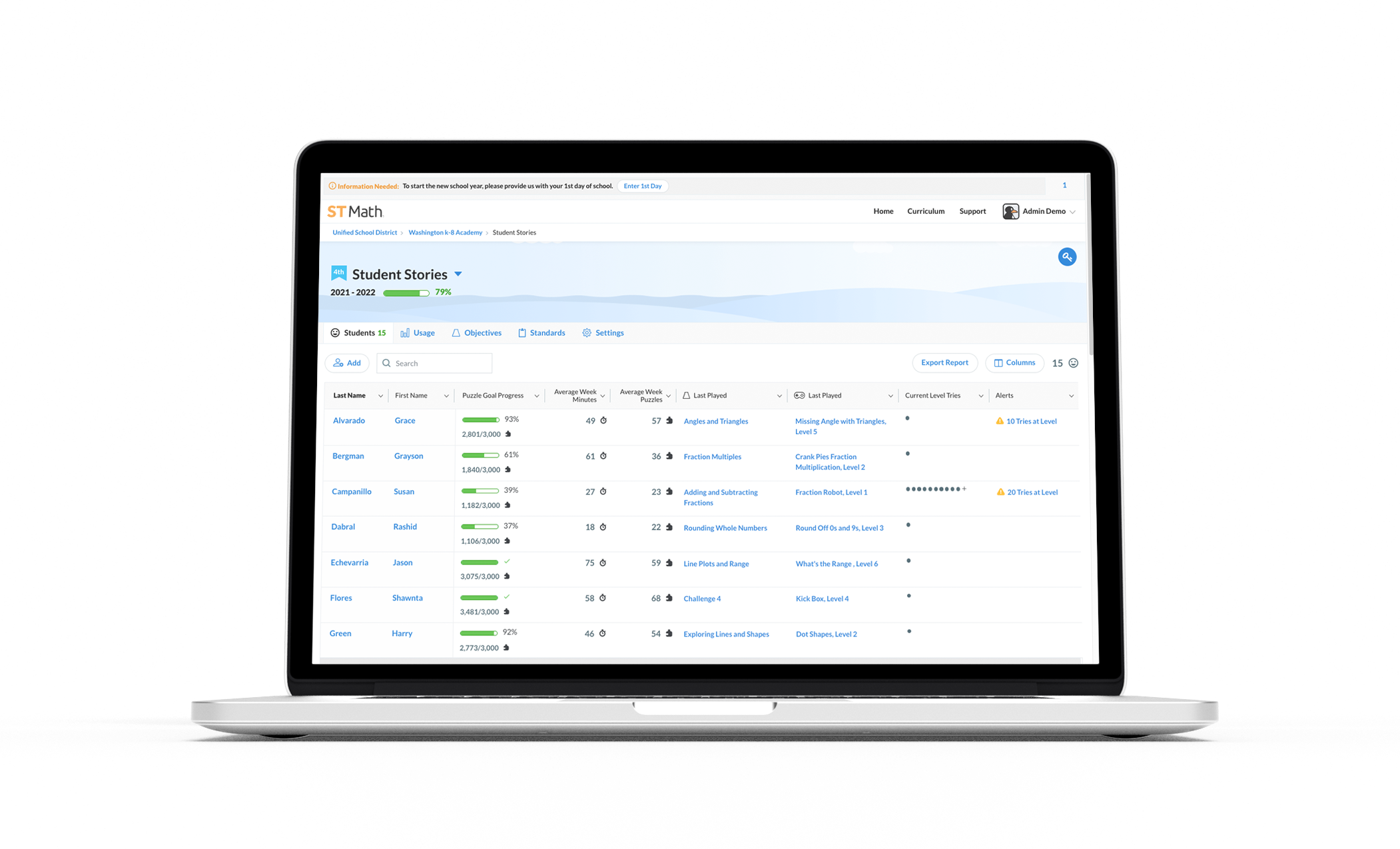The Neuroscience of Learning Math
What if mathematics could be taught the way the brain learns?
\frac{7}{8}+\frac{12}{13}
Estimate the Sum
a. 1
b. 2
c. 19
d. 21
\frac{7}{8}+\frac{12}{13}
Estimate the Sum
a. 1
b. 2
c. 19
d. 21

\frac{7}{8}+\frac{12}{13}
Estimate the Sum
a. 1
b. 2
c. 19
d. 21
\frac{187}{104}
=
\frac{7}{8}+\frac{12}{13}
Estimate the Sum
a. 1
b. 2
c. 19
d. 21
Majority of students chose "C" or "D"
\frac{187}{104}
=
\frac{7}{8}+\frac{12}{13}
Estimate the Sum
+



≈ 2

Keeping Students on Grade Level







Keeping Students on Grade Level








Keeping Students on Grade Level









Keeping Students on Grade Level










Admin & Teacher Data Platform

ST Math recommended minutes per week


Third Party Validation
A 2019 WestEd study found schools that consistently used ST Math outgrew similar schools in statewide rank by 14 percentile points.†



What are students saying about ST Math?
JiJi helps me keep trying. When I make mistakes, I learn from it.


Dear JiJi—you’re the best. Your program is amazing.

Thank you for helping me in math. I really like math. It’s so fun.
Students who play ST Math have higher mathematics self-beliefs


ST Math's impact on student self-beliefs is strongest for those students who had lower mathematics achievement scores

ST Math operates through students' self-belief to positively influence achievement
Teomara Rutherford, Allison S. Liu, Arena S. Lam & Katerina Schenke (2020) Impact on mathematics self-beliefs from a mastery-based mathematics software, Journal of Research on Technology in Education

The old way of teaching math was to make you do it like a machine...
The new way is to understand it so you can build the machines!

See Math. Do Math. Love Math.
To ensure that all students are mathematically equipped to solve the world's most challenging problems.
OUR MISSION:

Neuroscience of Learning
By Nigel Nisbet
Neuroscience of Learning
Presentation Slides
- 280





